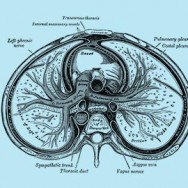
Pulmonary Thromboendarterectomy
Background
Pulmonary embolism (PE) occurs when one or more of the arteries in the lung become blocked with a blood clot. These blood clots commonly originate in the legs (called deep vein thrombosis, DVT) and then travel to the lungs. The causes for a DVT or PE include:
- Blood stasis – When the blood does not move it begins to clot. This can occur during prolonged periods of immobility e.g. during a plane trip.
- Hyper-coaguability – This means the molecules and cells in blood are more likely to clot. This can occur during inflammation e.g. injury, burns or cancer; or due to inherited conditions e.g. factor V Leiden.
- Endothelial injury – This means the inner lining of blood vessel is damaged, which exposes surfaces that cause blood clots to form. This can occur in hypertension (high blood pressure) and injuries.
When the arteries in the lung become blocked, the blood in that part of the lung cannot pick up oxygen. The symptoms include sudden onset chest pain, shortness of breath, cough with blood, or lightheadedness. There may also be swelling or pain in the leg if there is a DVT.

When someone has a PE they are given blood thinners and possibly drugs to dissolve the clot. If these do not do dissolve the clot over the next few months, then it can be become “organized” and stuck to the artery. This can then cause a chronic obstruction to the blood flow, and result in a disease called pulmonary hypertension (high blood pressure in the lungs). An operation called pulmonary thromboendarterectomy may be needed to remove this clot and return the pressures to normal.
About the surgery
Pulmonary thromboendarterectomy is a complicated and difficult procedure. The blood flow through the arteries where the clot is must be stopped so that it can be removed. To do this the circulation must be stopped and so the is patient cooled down to hypothermic temperatures (18 – 20°C) to avoid brain and tissue injury.
Once the patient is cooled and the artery is opened, the clot is carefully removed because it is quite closely stuck to the artery wall. This is a delicate part of the procedure, and usually takes ~40 min. The patient is then rewarmed, and their circulation is restarted. The procedure in total can take 6 or more hours to perform.
Recovery period
Because of the complex nature of the surgery, recovery can often be long and may require a long period of time in intensive care. Often the patient is kept asleep for several days after the surgery while the lungs accommodate to the new blood flow. However the majority of patients experience excellent relief of their symptoms and the pressures in their lungs return to normal.
Risks of the surgery
The major risks associated with this procedure include the inability to remove all of the clot, and swelling (oedema) of the lungs because the large amount of new blood flow. The risk of death during the procedure depends on the severity of the patient, but is usually between 5 – 10%.
For more information please visit:
Society of Thoracic Surgery Pulmonary Thromboendarterectomy
Cleveland Clinic Chronic Thromboembolic Pulmonary Hypertension
All patients should consult their cardiothoracic surgeon for specific information about their medical condition and surgery.

